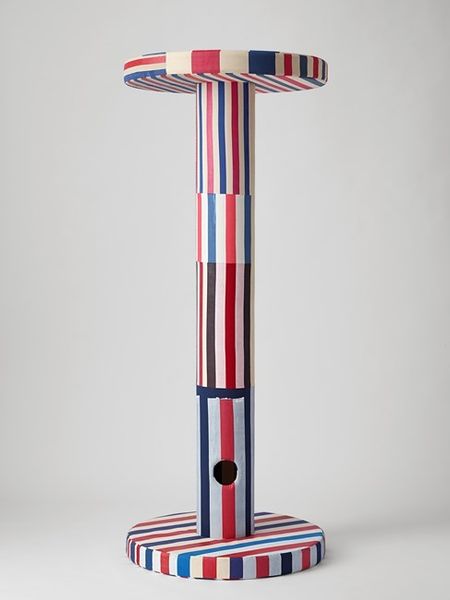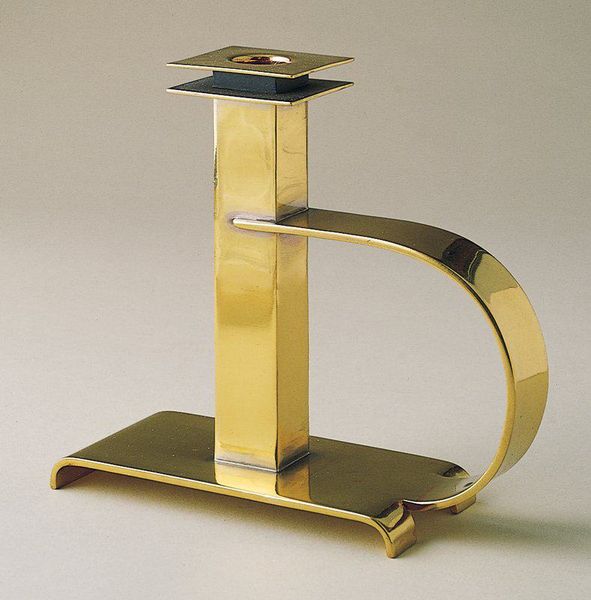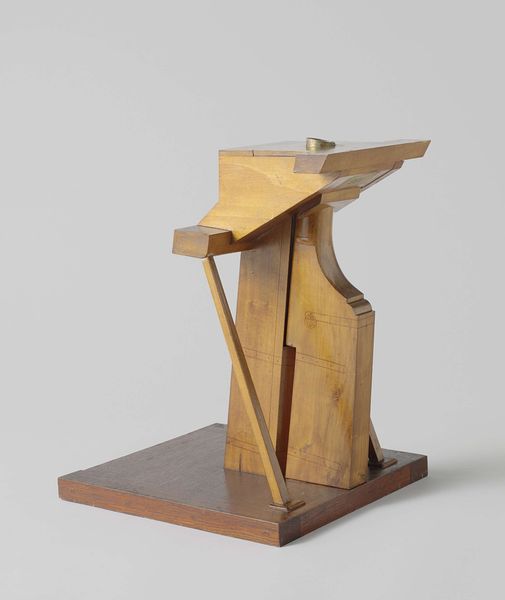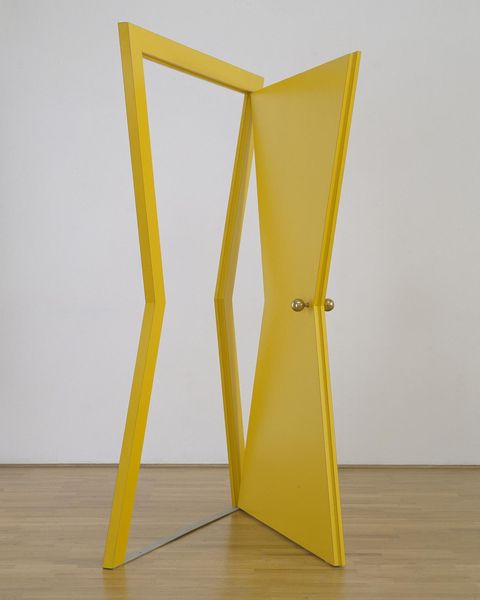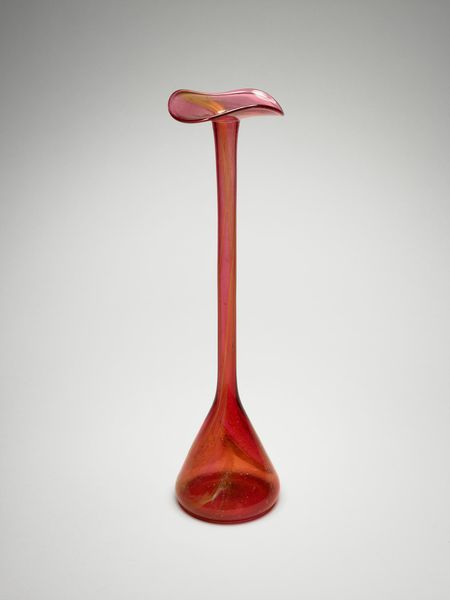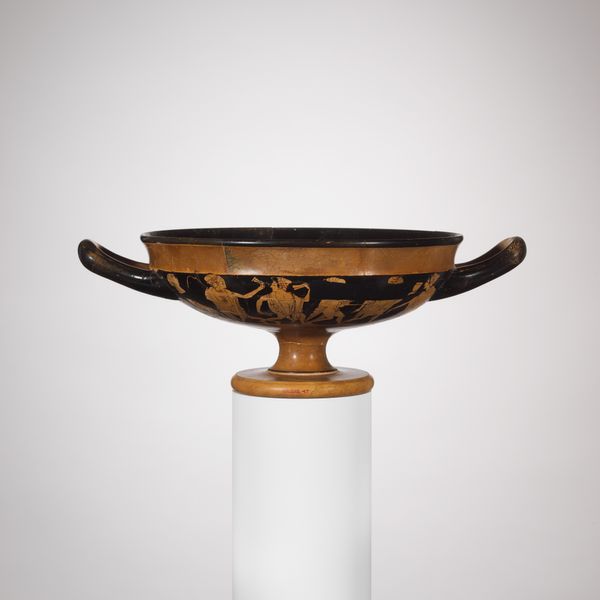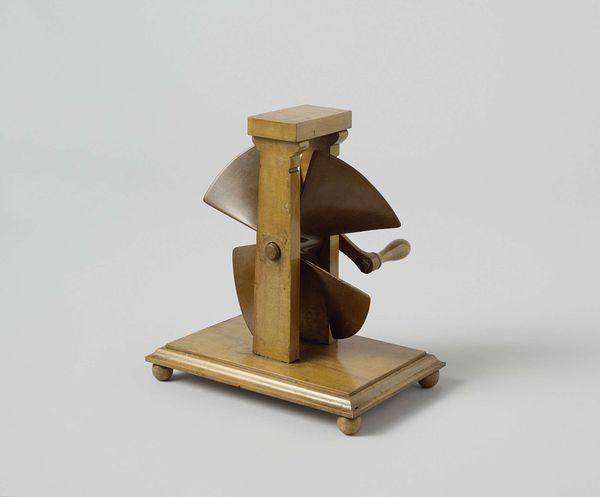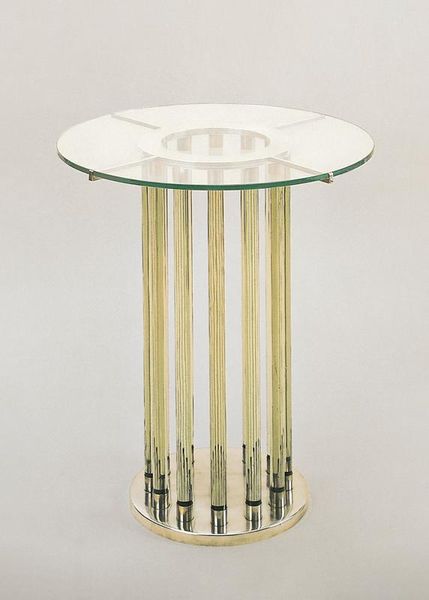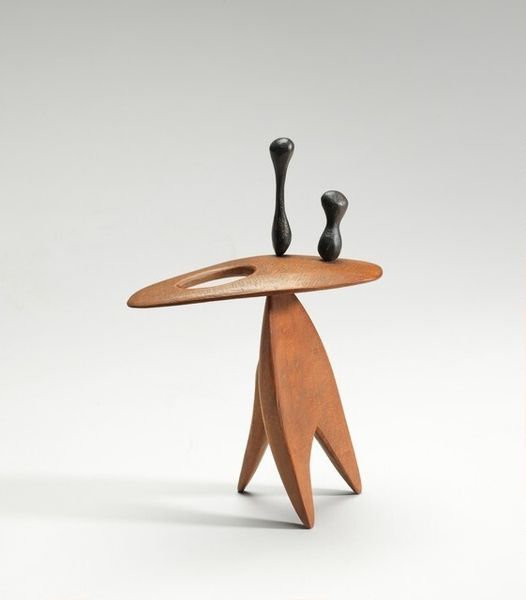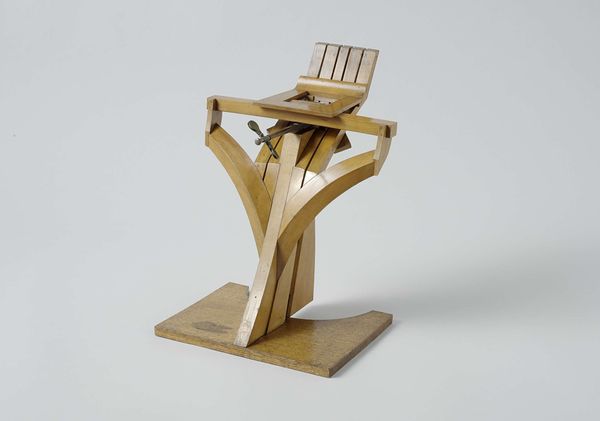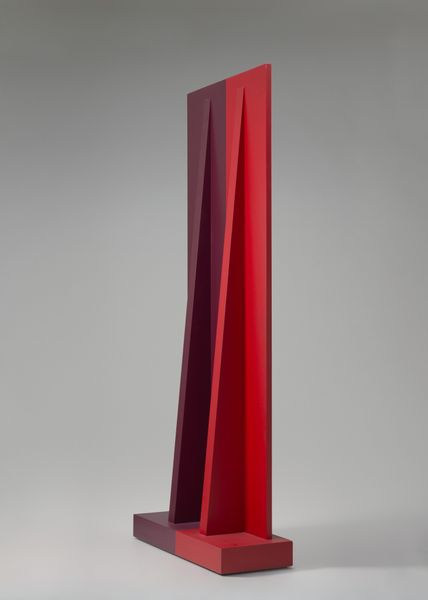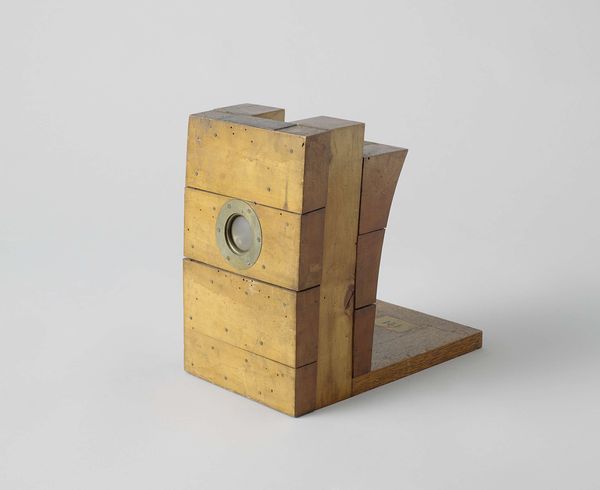
#
table
#
3d printed part
#
virtual 3d design
#
product design photgrpaphy
#
3d shape
#
prop product design
#
white focal point
#
3d digital graphic
#
metallic object render
#
studio mock-up
#
product render
Copyright: Tal R,Fair Use
Editor: Here we have "Chimney" created in 2013 by Tal R. It features these playful green and yellow stripes. It almost reminds me of a child's toy, yet it's displayed with a sort of reverence. What social commentaries might this be exploring? Curator: The artist deliberately presents a dichotomy between high and low culture by displaying an everyday object with high reverence. By using the form of domestic, practical objects like the stool and giving them names and cultural worth by elevating the platform itself to art, he's referencing movements in the twentieth century that took domestic, sometimes manufactured products and placed them in art galleries and gave them value, questioning cultural elitism. Editor: That's a good point. The simple form and bright color palette do seem intentionally approachable. Could there be a commentary on accessibility to art here? Curator: Absolutely. How do social and cultural norms dictate what is deemed worthy of artistic attention? Think about how institutions play a part, especially considering its positioning. Is it mocking it, or creating awareness to the power that an institute can wield. Consider also the socio-political factors influencing the creation of art – does this resonate with any contemporary concerns? Editor: I see. So, it's less about the object itself and more about how it’s framed by the art world and how the art world in turns influence socio-political climate. What were you hoping the audience will gain when looking at it? Curator: To encourage critical thinking on these topics; questioning value, understanding perspective, and considering who decides what deserves our attention are core lessons here. Editor: It’s insightful to look at how power dynamics intersect with art like this, shaping its message beyond the surface aesthetic. Curator: Exactly, seeing art as an active part of broader historical narratives transforms the experience of viewing, wouldn’t you say?
Comments
No comments
Be the first to comment and join the conversation on the ultimate creative platform.
